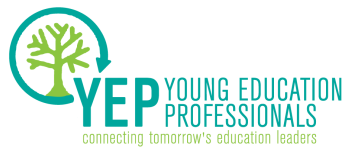
According to the Council of the Great City Schools, school buildings in large urban districts are rapidly deteriorating—so much so that facilities’ decline is hindering the very mission of these schools: educating children. The Council’s report suggested that “students in deteriorating buildings score between 5 to 11 percentile points lower on standardized achievement tests than students in modern buildings.” To be sure, facilities conditions are not the only factors contributing to learning loss for these students as studies show other elements such as teacher quality have major influence on student achievement, but the Council is not alone in recognizing this trend. One 2008 study discovered that there were significant implications for student achievement in reading, language, math, and science, based on the design of a school. Another study found ties between student behavior and academic learning spaces.
D.C. Public Schools alone contains 111 school facilities, and like many other urban districts, DCPS is no stranger to the rapid deterioration of its school buildings and the negative effects these conditions can cause.
Councilmember David Grosso recently lamented the spending in the District’s schools during the city’s most-recent budget negotiations. Grosso has said there are at least 26 schools in the District that have not been touched, despite the District’s plan for school modernizations. Many of these schools are in low-income neighborhoods east of the Anacostia River.
However, Grosso is not the only one who has been advocating for better budgeting with school improvements. Councilmember David Catania expressed similar concerns about facilities budgeting in 2013. And DCPS has had this issue for quite a while: in 2004, students at Coolidge High School complained of learning conditions so terrible that they “couldn’t think.”
The 21st Century School Fund is an organization whose mission is to “build the public will and capacity to modernize public school facilities so they can support high quality education and community revitalization.” They regularly put out updates, publications and news about school construction projects. Most recently, they published the DCPS Capital Budget for 2016-21 on their website and analyzed school projects by ward. The organization came up with some interesting results.
Based on the data in the Capital Budget, the 21st Century School Fund found that funding across the district for the next five years is not equitable. The wards that are receiving the most money are Wards 1, 3 and 4, which are in the wealthier and safer parts of the city. These wards have an 8.2%, 8.2% and 14% poverty rates respectively and 1.5, 1.5 and 7.5 violent crimes per 1000 people. In comparison, Ward 8, which has been typically known as one of the worst parts of the city, has a 37% poverty rate and 19 violent crimes per 1000 people.
Last month, I reported about Orr Elementary School and the issues school leaders have been facing in trying to get appropriate funds for their school to be renovated. Orr, which is in Ward 8, is one of the schools affected by this Capital Budget plan. One would think that schools that serve higher need populations, such as those in Ward 8, would receive more money. But, so far, there are only eight schools that are east of the Anacostia that will be receiving funds for renovations.
Luckily the D.C. Council seems to be paying attention. Councilmember Grosso will be holding Town Hall Meetings to hear from residents, parents, students and education stakeholders about public education in D.C. I strongly suggest as many people as possible get out to in order to explain how urgent it is that our schools be funded more equitably across the entire city. The quality of students’ education depends on it.
Amara Pinnock is an elementary school teacher in DC. Reach her via email or Twitter.



 RSS Feed
RSS Feed